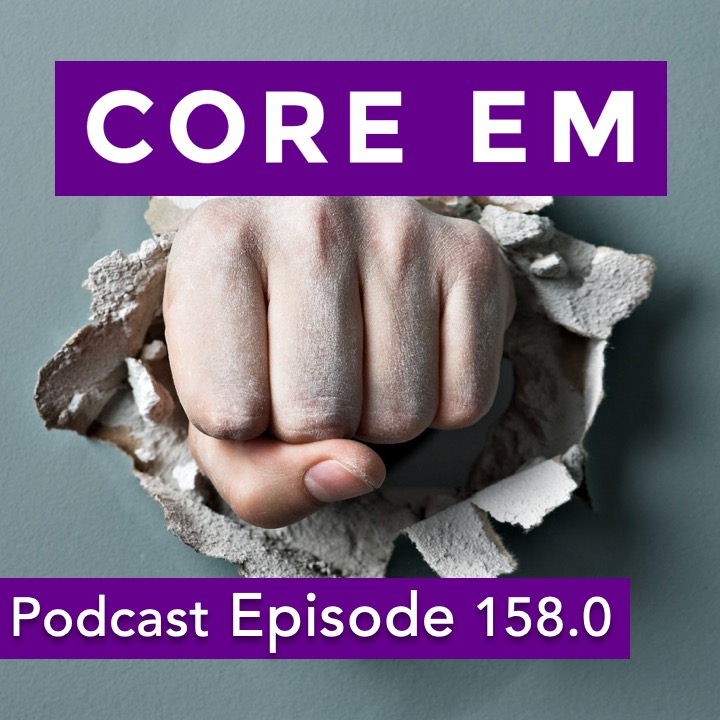In this episode, we discuss Boxer's fractures and how to best manage them in the ED.
Episode 158.0 – Boxer’s Fracture
Podcast Video
Show Notes
Background:
- 40% of all hand fractures
- A metacarpal fracture can occur at any point along the bone (head, neck, shaft, or base)
- “Boxer’s” fractures classically at neck
- Most common mechanism: direct axial load with a clenched fist
- Most common metacarpal injured is the 5th
- A majority of these injuries are isolated injuries, closed and stable
Examination:
- Ensure that this is an isolated injury
- May note a loss of knuckle contour or shortening
- A thorough evaluation of the skin is important
- Patients may also have fight bites and require irrigation and antibiotics
- Tender along the dorsum of the affected metacarpal
- Evaluate the range of motion as the commonly seen shortening results in extension lag
- For every 2 mm of shortening there is going to be a 7 degree decrease in ability to extend the joint
- Check rotational alignment of digits with the MCP and PIP at 50% flexion.
- Partially clench their fist and ensure that the axis of each digit converges near the scaphoid pole / mid wrist
- Deformity is often seen due to the imbalance of volar and dorsal forces
- Dorsal angulation
- AP, lateral and oblique views should be obtained on XR
- The degree of angulation is estimated with the lateral view
- NB: Normal angle between the metacarpal head and neck is 15 degrees
Management:
- Most may be splinted with an ulnar gutter splint
- Must be closed, not significantly angulated, and not malrotated
- When splinting, place the wrist in slight extension, MCP (knuckles) at 90 degrees and the DIP and PIP in a relaxed, slightly flexed position
- A closed reduction is indicated if there is significant angulation
- “20, 30, 40” rule
- If angulation is more than:
- 20 in the middle finger metacarpal
- 30 in the ring finger metacarpal
- 40 in the pinky finger metacarpal
- Analgesia with a hematoma block or ulnar nerve block
- Reduction technique: https://www.aliem.com/2013/01/trick-of-trade-reducing-metacarpal/
- If angulation is more than:
- “20, 30, 40” rule
Referral:
- May have mild deformity or decreased functionality and strength in hand grip after this injury
- Emergent evaluation if:
- Open fracture
- Neurovascular compromise
Follow up:
- Refer to hand specialist
- Within 1 week if fractures of 4thand 5thmetacarpals with angulation
- 3 to 5 days if the 2ndand 3rd metacarpalsare affected
- Immobilized for three to four weeks in splint
- Healing may take up to six weeks
Take Home Points:
- This is one of the most common fractures we will see as emergency physicians
- When evaluating these patients, ensure that this are no other more severe, life-threatening injuries, and pay particular attention to the skin exam so that you do not miss a fight-bite
- Reductions may be required if there is significant angulation, which is guided by the 20, 30, 40 rule
- Finally, emergent specialist evaluation is indicated if there is an open fracture or evidence of neurovascular compromise



very informative post, most of the people don’t know about these facts..